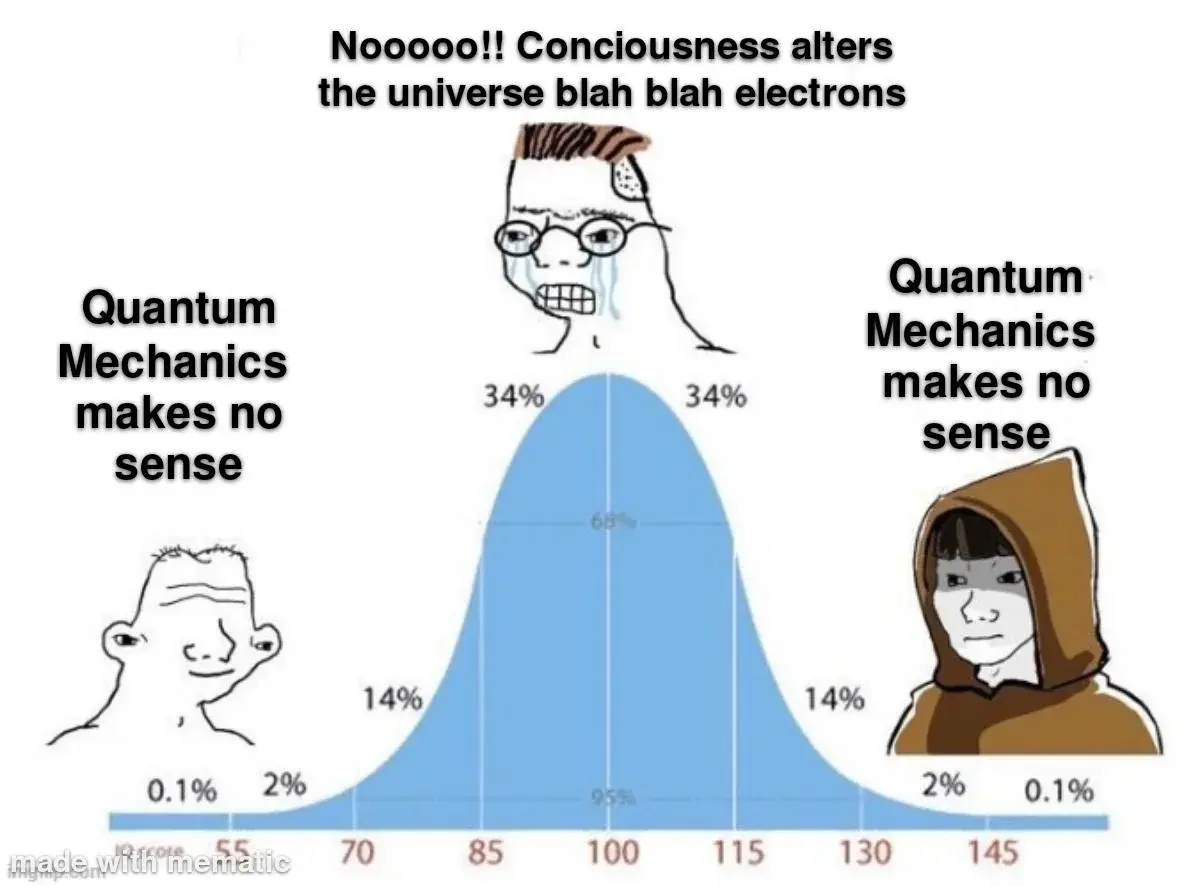this post was submitted on 12 Dec 2023
370 points (94.5% liked)
Science Memes
10885 readers
4564 users here now
Welcome to c/science_memes @ Mander.xyz!
A place for majestic STEMLORD peacocking, as well as memes about the realities of working in a lab.

Rules
- Don't throw mud. Behave like an intellectual and remember the human.
- Keep it rooted (on topic).
- No spam.
- Infographics welcome, get schooled.
This is a science community. We use the Dawkins definition of meme.
Research Committee
Other Mander Communities
Science and Research
Biology and Life Sciences
- !abiogenesis@mander.xyz
- !animal-behavior@mander.xyz
- !anthropology@mander.xyz
- !arachnology@mander.xyz
- !balconygardening@slrpnk.net
- !biodiversity@mander.xyz
- !biology@mander.xyz
- !biophysics@mander.xyz
- !botany@mander.xyz
- !ecology@mander.xyz
- !entomology@mander.xyz
- !fermentation@mander.xyz
- !herpetology@mander.xyz
- !houseplants@mander.xyz
- !medicine@mander.xyz
- !microscopy@mander.xyz
- !mycology@mander.xyz
- !nudibranchs@mander.xyz
- !nutrition@mander.xyz
- !palaeoecology@mander.xyz
- !palaeontology@mander.xyz
- !photosynthesis@mander.xyz
- !plantid@mander.xyz
- !plants@mander.xyz
- !reptiles and amphibians@mander.xyz
Physical Sciences
- !astronomy@mander.xyz
- !chemistry@mander.xyz
- !earthscience@mander.xyz
- !geography@mander.xyz
- !geospatial@mander.xyz
- !nuclear@mander.xyz
- !physics@mander.xyz
- !quantum-computing@mander.xyz
- !spectroscopy@mander.xyz
Humanities and Social Sciences
Practical and Applied Sciences
- !exercise-and sports-science@mander.xyz
- !gardening@mander.xyz
- !self sufficiency@mander.xyz
- !soilscience@slrpnk.net
- !terrariums@mander.xyz
- !timelapse@mander.xyz
Memes
Miscellaneous
founded 2 years ago
MODERATORS
you are viewing a single comment's thread
view the rest of the comments
view the rest of the comments

Think of it like this:
You can use a tennis ball machine to measure how far away a house is by firing the tennis ball at a constant velocity, timing how long it takes the tennis ball to come back to you, multiplying that time by the velocity, and dividing by 2 (since you measured the distance for a round trip). This works pretty darn well for measuring the distance to houses.
But now try this same trick to measure the distance to another ball. When your measuring ball hits the ball you want to measure, it doesn't stay resolutely planted in the ground like that nice friendly house. The energy from your measuring ball bounces the ball being measured off into the distance. Even if you could get your measuring ball to return, the ball you measured isn't in the place you measured it.
Replace that tennis ball with a photon, and you have the basic picture. There's no such thing as passive observation. Measuring something interacts with that thing. Conventional measurement is like in the case with the house, the thing being measured is so much bigger and more stable than the thing we're measuring with that the effect is negligible. But once you start trying to measure something on the same scale as your measuring tool, the ensuing chaos makes it basically impossible to get useful measurements.
What happens if you try to cut a photon in half with a knife?
The edge of a knife has to be thinner than the thing it's cutting, and we haven't found anything thinner than a photon
Clearly you haven't seen my penis.
By that implication it's fundamentally impossible for anyone to see it.
Lol.
I've found plenty of things thinner than photons, it's just that the photons they're thinner than are extremely low energy.
This analogy is really well thought out. It really helps my brain understand the weirdness that goes on with measurements on the quantum scale. Thanks for taking the time to type it out.